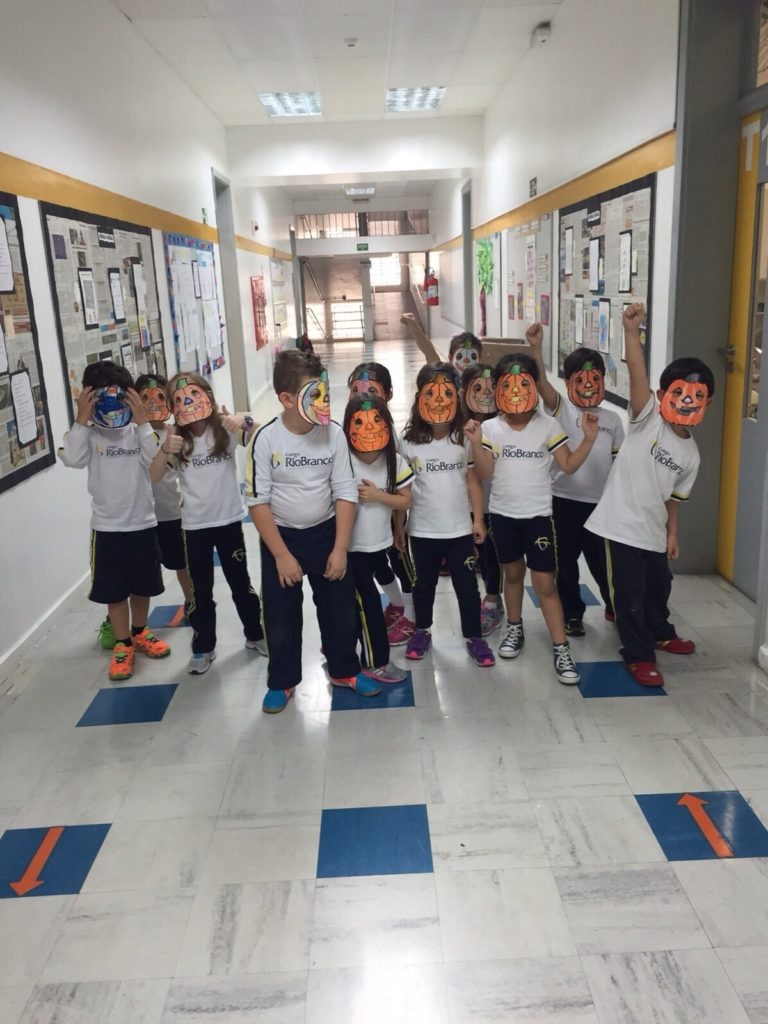In Brazil, Halloween is also celebrated on October 31, but the date hasn’t the same meaning and importance as it has in the northern hemisphere.

Among upper-middle-class Brazilian children who are most familiar with the American culture, generally those who study in private schools and attend language schools, Halloween is mainly celebrated during little parties in class, with children dressed in costume, bringing sweets to exchange with classmates.
Even without real pumpkins, Halloween has grown in Brazil because private schools have offered more options for bilingual courses to meet the demand of the Brazilian elite who value international exchange, often travel abroad, and make all efforts for their children to pursue global careers.
In some condominiums, the party involves home decoration, though not as fancy as the traditional North-American ones. Costumed children roam the condominium streets looking for decorated homes, which signaling that their owners are joining the trick-or-treat fun of sweet distribution.
This party is always closely watched by its great supporters and true enthusiasts: the parents. They eagerly photograph all happy moments which are immediately posted on social media. The children costumed as witches, zombies, and vampires are, to their parents’ eyes, tokens of internationalized and acculturated Brazilians belonging to the minority elite of bilingual citizens standing for social status and pride.
In Brazil, the image of a child celebrating Halloween is immediately identified as belonging to the elite, who studies at a private school and/or takes an English course at a specialized school, and resides in a gated community. Probably this child has also traveled abroad, has already participated in a student exchange program, or has lived abroad. In other words, this image can tell a lot about the child’s family, a successful family in the opinion of the Brazilian middle class.
Moreover, this image may appeal to specific audiences: the elite-aspiring-middle-class, families planning to visit the United States in their next vacation, especially those willing to send their children to a North-American exchange program.
On the other hand, it can also mean that their parents do not profess a neopentecostal religion, and may alienate this audience from the brand they use in their advertising campaigns. The same reasoning goes for advertising campaigns that allude to Halloween.
The theme of monsters, vampires, and witches finds resistance in the most religious Brazilian families, who do not allow children to dress as witches and put on any evil-related props. In Catholic schools, the party is even forbidden, and instead of Halloween on October 31, the next day, children must celebrate All Hallows Day: All Saints Day.
In retail, Halloween is not a relevant date. Some supermarket chains, school supply stores, and especially party supply stores address the issue in their business calendar.
It is noteworthy that in Brazil, neopentecostal religions daily approach the spiritual battle against demons and the evil possession of bodies. For those believers, Halloween is considered a feast of satanic and occult celebrations. Every year before Halloween, the preachers of these churches warn parents of the day’s supposed “danger” calling on parents to forbid their children to play games and to stay away from the costumes of witches, tridents, and horns.

For most Brazilian children who study in public schools and belong to less favored economic classes, the date is blank. For all those children, and even the most financially privileged children who play Halloween in Brazil, Brazilian folklore offers other legendary hair-raising creatures like Saci Pererê, an evil-doer one-legged black boy wearing a red cap smoking a pipe, besides Boitatá, a fire snake that lives in rivers and protects the Brazilian forests from invaders who set fire to nature. According to the legend, this snake can turn into a burning log to chase the invaders from the place. Then there is also a creature named Curupira, the “forest demon,” a supernatural entity that lives in the jungle and has its feet turned backward to leave footprints in the opposite direction, which also prevents fauna and flora from hunters’ attacks. Another creepy creature is the Headless Mule, which has a fire torch instead of one head.
These spooky folklore creatures that inhabit the Brazilian popular culture leave little room for kids to fancy Halloween’s vampires and zombies.
